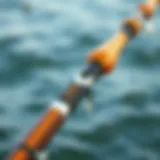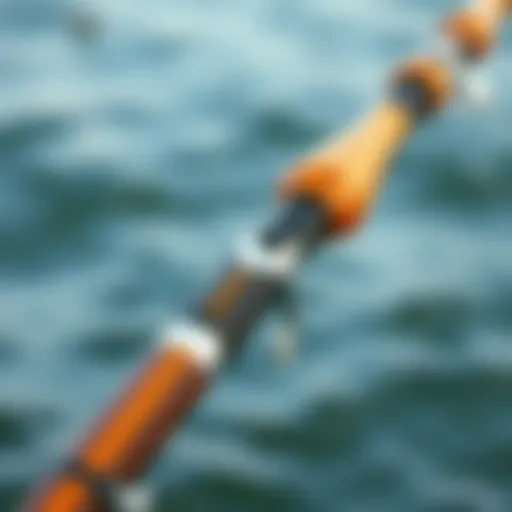Top Surfing Destinations in Florida You Must Visit
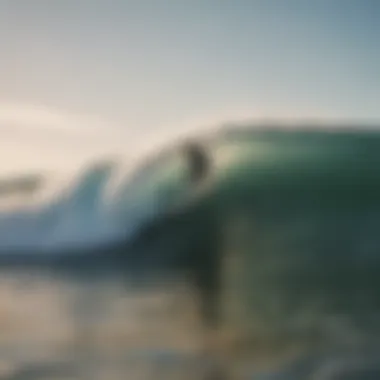

Intro
Florida, known for its sunny beaches and vibrant culture, is also a hotspot for surfers. From the bustling East Coast to the quieter gems of the Gulf, the state offers a variety of surf spots that cater to different skill levels. Surfers can find everything from mellow waves for beginners to challenging swells for the seasoned pro. This article aims to arm you with the knowledge needed to ride the waves right, including insights on surf gear, tips on techniques, and a peek into the local surf culture. Whether you're a die-hard enthusiast or just dipping your toes in the ocean, grabbing your board and hitting the surf in Florida can turn into an unforgettable adventure.
Surf Gear and Equipment
Latest Surfboard Technologies
In the world of surfing, having the right gear is as important as knowing how to carve the waves. Modern surfboards are not just pieces of foam; they come loaded with innovative technologies. Surfboards today often use materials like epoxy resins which make them lighter and more durable. Some boards even use hydrofoils, allowing surfers to glide above the water, drastically changing the riding experience. Moreover, many brands now focus on eco-friendly materials, which appeals to environmentally conscious surfers.
For example, brands like Lost Surfboards have been at the forefront of developing boards designed for specific types of waves. They offer models that excel in both small and big swell conditions. Knowing these distinctions can help you choose the right board for Florida's diverse surf environment.
Essential Accessories for Surfers
Beyond the board itself, there are accessories that can make your surfing experience smoother. Here’s a quick list of essentials:
- Wetsuits: Florida's waters can vary in temperature. A good wetsuit or a rash guard can protect you from the cold and sun simultaneously.
- Leash: This is crucial; a leash keeps your board connected to you, especially in choppy waters.
- Wax: Good grip on your board can make all the difference. Wax prevents slipping when you paddle and ride.
- Sunscreen: Don’t underestimate the power of the sun. Waterproof, reef-safe sunscreen helps protect your skin.
Investing in quality gear enhances your performance and safety.
Techniques and Skills
Wave Riding Strategies
To ride the waves effectively, understanding them is key. Observing the surf patterns and tides can help you pick the best time to catch a wave. Beginners should focus on paddling technique and finding the right position on the board. Practicing popping up smoothly from a lying position to a standing one is crucial. Often, surfers mention that the initial balance and timing can make or break a ride.
For more advanced surfers, strategies include reading the wave and determining whether to drop in front of the peak or to catch a shoulder. The difference can greatly affect your ride’s quality.
Safety and Surf Etiquette
Surfing is not just a sport; it’s a community. Knowing the rules of the lineup is essential. Here are a few guidelines:
- Respect Right of Way: The surfer nearest to the peak has priority. If someone is already riding a wave, wait for your turn.
- Communicate: If you're about to drop in, calling out to nearby surfers can help avoid collisions.
- Look Out for Each Other: Always keep an eye on beginners if you're more experienced. Surfing can be tricky, and accidents do happen.
Adhering to the unwritten rules not only makes the experience enjoyable but also helps foster a sense of community within the surf culture.
"Surfing is not just about catching waves; it’s about respecting the ocean and those who share it with you."
As we continue this exploration of Florida’s prime surf spots, you’ll find that the waves aren't the only things worth riding; the local culture and sense of camaraderie among surfers can elevate your experience to something truly special.
Prelims to Surfing in Florida
Florida's coastline, stretching over 1,300 miles, is a beacon for surfing aficionados and casual beachgoers alike. When you think of surfing, places like Hawaii or California might pop into mind, but Florida holds its own with a distinctive blend of culture, community, and wave action. Surfers from all skill levels come to this sun-soaked state to catch the perfect wave, making it a prime surfing destination.
The appeal stretches far beyond just riding waves. Surfing in Florida is interwoven with local culture, offering insights into the lifestyles and values of various communities along the coast. From the laid-back vibes of Cocoa Beach to the bustling scenes at Daytona, surfing is not just a sport; it’s a way of life that unites people and fosters lasting friendships.
The unique geography of Florida plays a crucial role in its surfing scene. With the Atlantic Ocean to the east and the Gulf of Mexico to the west, surfers can experience a diverse range of conditions and wave types, accommodating both novices and seasoned pros.
Furthermore, Florida's warm climate allows for year-round surfing, giving enthusiasts ample opportunity to hit the waves whenever they choose. Weather patterns also contribute to the surfing experience, creating seasonal swells that can either challenge or thrill the surfer.
Alongside these elements, safety considerations are paramount in ensuring enjoyable surfing experiences. Understanding the local conditions and potential hazards is just as important as mastering the sport itself. This article will dive deeper into these features, exploring the landscapes from north to south, the community's influence, and vital surfing tips.
"Surfing is a way of life. It's about more than just riding a board; it’s about who you are and where you fit in the world."
In essence, the introductory exploration of surfing in Florida offers a comprehensive look into why this activity is so significant. Interested individuals will walk away with a better grasp of the landscape, the culture, and most importantly, the potential experiences that await them on Florida’s shores.
Understanding Florida's Surf Culture
Florida’s surf culture is like a colorful tapestry woven from the experiences, histories, and lives of those who ride the waves. It’s a blend of artistry, tradition, and a love for the ocean that flows through the orange groves and sandy shores. This culture is central to understanding the surf experience in the state; it shapes not just how residents view the ocean but instills a sense of belonging, community, and responsibility towards the coastlines.
At its core, surf culture in Florida is about more than just catching waves. It echoes the voices of generations who’ve cherished the ocean’s rhythm. When surfers hit the shores of Cocoa Beach or New Smyrna Beach, they might be following in the footsteps of pioneers who braved the waters long before. These local legends, often seen sharing tales over a cold drink at beachside cafés, are the lifeblood of surf culture. It’s like a secret club that anyone can join, provided they share the same passion for the surf's highs and lows.
Benefits of Understanding Local Surf Culture
Grasping the nuances of Florida surf culture can provide significant advantages:
- Connection: Surfing is about camaraderie. Understanding local surf spots and the stories behind them deepens connections among surfers.
- Respect: Recognizing local customs and etiquette enhances the surfing experience and avoids the ire of seasoned locals.
- Environmental Awareness: Many surfers are ardent advocates for preserving the marine ecosystem, understanding geographical nuances can drive collective efforts for sustainability.
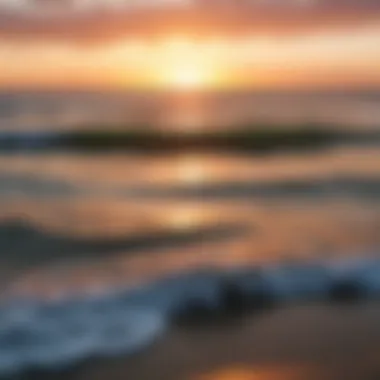

Considerations about Florida's Surf Culture
When exploring the culture, it's critical to pay attention to specifics:
- Diversity of Influences: Each region—from the Pines of the Panhandle to the vibrant coasts of Miami—boasts unique styles and historical influences. Florida’s surf culture is inclusive, reflecting a mix of backgrounds, which enriches the overall experience.
- Impact of Climate: Florida’s tropical climate plays a significant role in shaping the culture. The warm waters invite surfers year-round, promoting an unyielding sense of community.
- Events and Competitions: The surf competitions throughout the year not only highlight outstanding talent but also strengthen the community spirit among surfers of all backgrounds.
The deep respect surfers hold for the ocean often translates into a community focused on conservation, ensuring future generations can share in the joy of surfing.
In summary, understanding Florida's surf culture opens doors to a deeper level of enjoyment and respect for the ocean. It’s an enriching dive into a world where wave riders hold memories and traditions close, fostering a rich narrative of connection, which adds another layer of meaning to every wave caught and every board ridden.
The Best Surfing Destinations on the East Coast
When it comes to surfing in Florida, the East Coast stands tall as a prime hunting ground. This strip of sunshine and surf hosts a variety of beaches that offer different types of waves, catering to surfers from all walks of life. Whether you’re a beginner testing your balance or a seasoned pro chasing those thrilling breaks, the East Coast delivers a smorgasbord of options.
Not only does this region boast vibrant surf communities, but it also serves as a backdrop for numerous surf competitions and cultural events. The importance of the East Coast in Florida’s surfing narrative cannot be overstated. By exploring the gems hidden among the shoreline, surfers can tap into waves that tell a story of their own—each curl a reflection of the local culture that embraces it.
Cocoa Beach: The Surf Capital
Cocoa Beach takes the cake when it comes to Florida surfing. Whether you’re wandering down the famous Cocoa Beach Pier or just soaking up the sun on its sandy shores, you are always surrounded by ride-worthy waves. This beach is synonymous with surf culture, often referred to as the Surf Capital of the East Coast.
For those new to the sport, Cocoa Beach offers ample surf schools and rental shops. Many seasoned surfers from all around the globe also gather here to ride the consistent, friendly waves. The annual Eddie Rothman’s Florida Surf Film Festival and numerous local competitions add to the vibrant surf scene. You can feel the electric vibe in the air, especially during the summer months when surfers flock to catch waves that range from mellow to exhilarating.
Daytona Beach: A Diverse Experience
Daytona Beach is a treasure trove of surf experiences. Stretching for miles, this destination showcases a mix of wave types tailored for different skill levels. The popular Daytona Surf Shop has got been a local favorite for years, providing everything from board rentals to surfing lessons.
What makes Daytona distinctive is its versatility. Here, surfers can find mellow swells perfect for beginners alongside more challenging waves that can put advanced skills to the test. Besides, the beach’s famous hard-packed sand allows for unique vehicular access, making it a perfect spot for surf-related campouts or just an easy day of fun by the water. Seasonal surf contests, such as those presented by the East Coast Surfing Association, also highlight Daytona’s significant role in the region’s surf culture.
"Daytona isn’t just a beach; it’s a lifestyle wrapped in waves and joy."
New Smyrna Beach: The Wave Hotspot
New Smyrna Beach is often talked about in hushed tones among surfers, touted as one of Florida’s best-kept secrets. With over 13 miles of surfable coastline, it’s no wonder locals call New Smyrna the wave hotspot. The beach is well-known for its consistent Atlantic swells that cater to surfers year-round.
What sets New Smyrna apart from its counterparts is its active surf community. The local surfer population isn’t just welcoming; they cherish their spot and share plenty of insider tips for those looking to experience the best waves. Occasional encounters with wildlife like dolphins during your surf session only add to the magic of this beach.
Although it’s famously known for its waves, one mustn’t overlook the local surf shops, delicious eateries, and live music events that lend a bit of character to the area. Here, you can immerse yourself in the culture while riding fantastic swells for all levels, making New Smyrna Beach a prime target on any surf trip to Florida.
Exploring Gulf Coast Surf Spots
Surfing on Florida's Gulf Coast often takes a back seat to its East Coast brethren, but that doesn't mean it's any less thrilling. In fact, the Gulf boasts its unique charm, featuring striking beaches with soft sand and rather friendly waves. This section shines a light on the surfer's paradise found west of the Timucuan River. The waters are generally warmer, and the scenery is undeniably picturesque. For those seeking a laid-back surfing experience or a chance to soak in the sun between waves, the Gulf Coast can be a real treasure.
When considering Gulf Coast surfing, you might find it less crowded, especially compared to more popular spots on the East Coast like Cocoa Beach or New Smyrna. This aspect can be particularly appealing to beginners looking to refine their skills without the pressure of larger crowds. Surfers can enjoy the gentle swells, often ideal for longboarders and those who prefer a more relaxed pace during their surf sessions.
Destin: An Emerging Surf Hub
Destin has been gaining traction among surf enthusiasts, and it's easy to see why. Known primarily as a vacation hotspot, Destin’s sugar-white beaches and emerald waters provide an unbeatable backdrop for surfing. The waves here can vary, thanks to the shifting winds and the changing tides, making it a favorable spot for surfers who thrive on diversity.
Plus, the town’s vibrant atmosphere brings together local and visiting surfers, enhancing the sense of community. Classes and workshops for newbies are abundant, making it easy to learn or polish your skills. The best times for surfing here can be during the summer months and in the fall, when the swells start to pick up, whispering promises of excitement and adventure.
What’s more, you’ll find that the nearby parks and nature reserves offer a serene escape from the hustle of a busy surf day. Imagine sitting atop your board, gazing back at the pristine shoreline, feeling the warm sun on your face while waiting for the next big wave.
Siesta Key: White Sands and Good Swells
Siesta Key has earned its stripes not just as a beautiful beach destination but also as a noteworthy surf location. The islands white sands are famous, drawing tourists from all over the world. However, while many come for sunbathing or beach volleyball, savvy surfers know that the swells here can be surprisingly good.
Alongside its crystal-clear waters, Siesta Key presents a unique opportunity for surfers. The waves can get quite fun, especially during the hurricane season when the ocean offers a bit more juice. Surfers of all levels can find something to embrace here, whether it’s a mellow morning paddle or challenging afternoon ride.
In addition to its excellent waves, Siesta Key encourages a strong community vibe. Local surf shops and rental stands dot the shoreline, fostering a sense of camaraderie among those who brave the waters together.
"The Gulf is not to be underestimated; it's a hidden gem of untapped surfing potential, and Florida surfers should keep carving out their path here."
Key Factors for Optimal Surfing Conditions
When it comes to hitting the waters, understanding the key factors for optimal surfing conditions is essential for any surfer, from the novice to the seasoned aficionado. Surfing is not just a physical activity; it’s a dance between the surfer, the surfboard, and Mother Nature. To reap the exhilaration of catching the perfect wave, one must have a good grasp of what influences those waves and when they are at their best.
Understanding Wave Patterns
Wave patterns are often viewed as the heartbeat of the ocean, dictating when, where, and how a surfer glides on the water. In Florida, one must focus on a few specific elements:
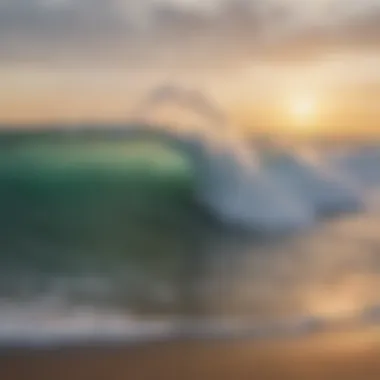

- Wind Direction: This plays a critical role in shaping waves. Onshore winds can create choppy water that makes for difficult surfing, while offshore winds smooth out the surface, creating cleaner and more rideable waves.
- Tides: Florida's coastline experiences a range of tidal changes. Knowing how the tide works at your surf spot can assist in finding the perfect conditions. Generally, many surfers prefer mid-tide for an optimal experience.
- Swells: Understanding the origin and size of swells can greatly inform your surf day. Swells generated by distant storms can result in powerful waves in Florida, particularly during the hurricane season.
Connecting the dots between these elements can help surfers predict the ideal conditions. Frequent checks on buoy data and surf forecasts allow one to stay ahead of the game.
The Impact of Weather on Surfing
Weather in Florida, with its subtropical climate, can be both a boon and a bane for surfers. The significance of weather cannot be underestimated when planning a surf trip:
- Storm Systems: Hurricanes can both be a threat and bring fantastic wave action. It’s vital to recognize when to hit the surf and when to be cautious of powerful surf conditions.
- Temperature: The warm temperatures in Florida not only make it comfortable but can also affect the water’s stability. Warmer waters can change wave dynamics and influence how the surf breaks.
- Rain and Sun: Though rain looks gloomy, it can often accompany good swell conditions. Just as important, surfing in sunny weather can be a delight, but always keep an eye on the UV index. Sun protection is critical.
"The weather for surfers is like a seasoned chef knowing how to combine flavors; a little change in temperature or wind can lead to a whole new tasting experience."
By paying attention to these weather factors, surfers can truly enhance their overall surfing experience, making smarter decisions about when to paddle out.
In summary, optimizing surfing in Florida requires surf enthusiasts to understand wave patterns intricately and closely monitor weather conditions. These factors intertwine, shaping each surf session into either a triumphant ride or a day of frustration. For a successful outing, making educated judgements using these considerations is key.
Seasonal Surfing in Florida
Understanding seasonal surfing is essential for anyone serious about catching the best waves in Florida. The fluctuations in weather, water temperatures, and ocean conditions not only influence the quality of surfing but also dictate the types of surfers you might encounter at the beach. Each season offers unique benefits to surf enthusiasts, whether you’re a seasoned pro or just starting out.
Best Times to Surf
Typically, the surf season in Florida aligns with two primary periods: late summer to early autumn and winter to early spring.
- Late Summer to Early Autumn (August to October):
- Winter (December to February):
- This time coincides with the Atlantic hurricane season. Swells generated from distant storms can create excellent wave conditions. High-quality waves often roll in, especially on the East Coast. Surf spots like Cocoa Beach and New Smyrna Beach can really shine during this period.
- Surfing during this time can require some caution, as tropical systems can also lead to dangerous rip currents. Surfers should stay alert and heed local warnings.
- The winter months bring more consistent swells and larger waves due to the North Atlantic storms. Destin and the Gulf Coast experience bigger and more powerful waves. This can be an exciting time for experienced surfers looking to challenge themselves.
- However, the frigid water temperatures necessitate appropriate wetsuit gear to ensure warmth and comfort.
Whether you prefer the warm waters of summer or the challenge of winter swells, there’s always an opportunity to surf in Florida throughout the year.
Hurricane Season: Risks and Opportunities
While hurricanes can wreak havoc, they are also a double-edged sword for surfers. The stormy conditions produce significant swells that can lead to unmatched surfing experiences. However, being aware of the risks is crucial.
- Understanding the Risks: Hurricanes generate strong currents and unpredictable sea conditions. Surfers must prioritize safety and watch for official warnings or advisories. The likelihood of rip currents increases dramatically during this season, making it vital for surfers to understand how to navigate these hazards.
- Opportunistic Swells: If you’re willing to put in the time to research and monitor storm activity, you might be rewarded with some of the best surfing conditions of the year. Florida surfers often track potential storm developments to catch the optimum wave periods, as these conditions can create miraculous surfing days that seasoned surfers eagerly await.
"Surfers know that patience and timing can lead to glorious rides, particularly during a hurricane swell. Just make sure safety is always at the forefront of your mind."
In summary, understanding the seasonal dynamics of surfing in Florida plays a pivotal role in shaping your surf experience. Each season has its perks, and being well-informed will enable you to make the most of every wave, whether it comes from a summer storm or a winter swell.
Surfboard Selection and Maintenance
Choosing the right surfboard and keeping it in top shape can make a world of difference for your surfing experience, especially in a place like Florida where the wave conditions can vary significantly. In this section, we dive into the essentials of surfboard selection and maintenance, providing you with a roadmap to ensure you ride those waves like a pro.
Choosing the Right Board for Florida Waves
When it comes to surfboards, Florida's unique surfing conditions demand a thoughtful approach. The state is home to a variety of breaks, from gentle shore breaks on the East Coast to some more playful waves along the Gulf Coast. Here are a few key factors to consider when selecting your board:
- Board Type: If you are just starting out, a longer board, like a longboard, might be the way to go. It offers greater stability and easier paddling. More experienced surfers might favor shortboards or fish boards, ideal for sharper turns and higher speeds on smaller waves.
- Volume: Volume directly affects buoyancy. More volume means easier paddling and catching waves, which can be a godsend in Florida’s sometimes fickle surf.
- Wave Size: Surf spots like Cocoa Beach often have smaller, fun waves, making a mid-length board a good choice. Conversely, during hurricane season, when swells pick up, you might want to switch to a more performance-oriented board.
To wrap up this section, consider your skill level and surfing style. Always aim for a board that complements your individual needs, rather than just following trends.
Basic Maintenance Tips
Maintaining your surfboard is essential to prolonging its life and ensuring optimal performance on the water. Here's the breakdown of practical tips:
- Rinse it After Each Session: Saltwater can be corrosive. Rinsing your board with fresh water after each surf session removes any salt, sand, and dirt that could cause damage over time.
- Store it Properly: Avoid leaving your board in direct sunlight for extended periods. A board bag can protect its surface and prevent UV damage, which can degrade the materials.
- Check for Dings: Regularly inspect your board for any dings or cracks, especially after a tumble or wipeout. Small issues can turn into bigger problems if left untreated.
- Repair Promptly: If you find any damage, consider using a surfboard repair kit to fix small dings. Preventing water from seeping into the foam core is crucial.
- Wax It: Keep your board’s wax clean and refreshed. A smooth, waxed surface enhances grip and prevents slipping when paddling out or riding the waves.
Tip: If you’re unsure about handling repairs, most surf shops in Florida offer repair services. It's often worth it to let the professionals handle delicate fixes.
By putting in a bit of effort to select the right board and perform basic maintenance, you’re setting yourself up for a much more enjoyable ride when you hit Florida's surf spots.
Safety Considerations for Surfers
Surfing is an exhilarating sport but it comes with its own set of risks. The importance of safety considerations cannot be overstated for any surfer, whether you’re just starting out or have been riding the waves for years. Understanding the dangers of the ocean and how to manage them substantially boosts not only your chances of enjoying a safe surf, but also enhances your overall surfing experience.
When you paddle out into the surf, you're engaging with an environment that is constantly changing, influenced by tides, wind, and the very waves you're attempting to ride. Knowing how to navigate these elements helps maintain both personal safety and the safety of others around you. The ocean holds unpredictable power, and every surfer should be equipped with knowledge to deal with it effectively.
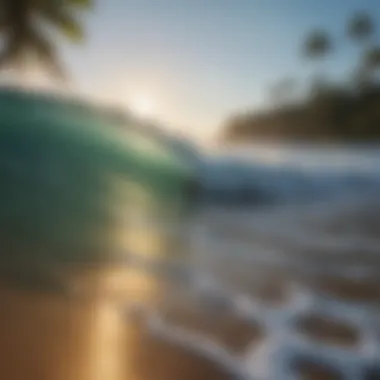

Common Hazards and How to Avoid Them
Various hazards await surfers, who must be proactive to avoid them. Here are common dangers and practical tips to help mitigate risks:
- Shallow Reefs and Rocks: Surfing near rocky areas can be risky, especially during low tide. Always check the tide charts before heading out and stick to areas known for safe breaks.
- Other Surfers: Crowded areas can lead to collisions. Maintain awareness of your surroundings, follow surf etiquette, and communicate with other surfers to prevent accidents.
- Wildlife Encounters: Sharks and jellyfish are part of the ocean’s ecosystem. While rarely dangerous, being vigilant can assist with minimizing unwanted interactions. Avoid surfing at dawn or dusk when many species are more active.
- Weather Conditions: Sudden storm changes can make conditions hazardous. Always check weather forecasts and conditions before hitting the surf. If storms loom, it’s wise to steer clear of the water.
"Being prepared isn't just a suggestion, it's a necessity when it comes to surfing."
These considerations, while straightforward, can significantly impact your safety and enjoyment. Thus, always err on the side of caution, and be ready to modify your plans according to situational changes.
Understanding Rip Currents
Rip currents are one of the most critical dangers surfers must recognize. These are narrow channels of fast-moving water that can pull even the strongest swimmer away from shore. Being aware of how to identify and react to rip currents can prevent dangerous situations.
- Identifying Rip Currents: Look for deeper, darker water or patches of water that look like foamy or discolored. Signs can also include a gap in the breaking waves or a channel of swift-moving water heading away from the beach.
- What to Do If Caught in One: If you find yourself in a rip current, the best advice is to swim parallel to the shore rather than directly against the current. Once you are out of its grip, swim diagonally towards the beach. If you're struggling, float and signal for help.
Being knowledgeable about rip currents can be lifesaving not only for you but for fellow surfers as well. Understanding where these currents typically form around Florida's surf spots is vital for a safe experience.
Taking the time to learn about surfing’s potential hazards offers a significant advantage. Having this information at your fingertips means you’re not just another surfer in the water—you're an informed participant ready to take on the waves with wisdom and skill.
Local Surf Culture and Events
Understanding the local surf culture and events in Florida is not just an additional facet of the surfing experience—it's a core component that enriches it. Florida serves as a canvas painted with diverse surf communities, artistical expression through events, and deep-rooted traditions that not only preserve the surfing spirit but also celebrate it. When you step onto a Florida beach, it's not solely about riding the waves; it's about immersing oneself into a vibrant social fabric.
The importance of local surf culture can’t be overstated. It cultivates a sense of belonging among surfers of all levels. From beginners wobbling on their first surfboard to seasoned pros mastering complex maneuvers, there exists a camaraderie fostered through shared experiences and local events. These gatherings are fertile grounds for learning and inspiration, acting as catalysts for personal and communal growth. Overall, the local surf culture shapes the identity of Florida as a surfing state.
Festivals and Competitions
In Florida, surf competitions and festivals are not just competitions—they are significant community events. The Cocoa Beach Surf Festival stands as a shining example. Held annually, it attracts surfers from various skill levels, turning the beach into a hub of excitement and festivity. This event often features live music, food trucks serving local delicacies, and of course, thrilling surfing heats that keep spectators on the edge of their seats.
Participating in these contests presents surfers with invaluable opportunities:
- Exposure: Competing in these festivals can help local surfers gain recognition, perhaps even leading to sponsorship deals.
- Networking: Meeting fellow surfers can lead to friendships that blossom into long-term partnerships, whether for fun surfing sessions or professional endeavors.
- Skill Development: Watching experienced surfers compete provides insightful learning experiences, showcasing techniques that might be previously unknown.
In addition to competitions, there are also events focused on surf culture overall, such as film festivals. The Florida Surf Film Festival showcases documentaries and short films emphasizing surf culture, environmental issues, and personal stories from surfers. Such gatherings inspire and foster a deeper appreciation for the ocean and its waves.
Community Involvement and Environmental Efforts
Florida's surf culture goes beyond just the thrill of catching waves; it embodies a strong sense of responsibility towards the environment. Many local surf organizations actively organize clean-ups and environmental conservation efforts. Activities like beach clean-ups serve dual purposes: they help keep coastal areas clean, fostering a healthier ecosystem, and also build community spirit among surfers who share a love for the ocean. It’s an opportunity to connect with nature while doing something good for the planet.
The chapter of community involvement also extends to education. Surfrider Foundation initiatives often focus on teaching locals, especially younger generations, about ocean conservation. Workshops and talks provide practical knowledge on how to minimize environmental impact while enjoying the waves.
As a result, participating in these initiatives provides surfers with:
- A Deeper Connection: Engaging in community efforts nurtures a relationship with the ocean that is both practical and emotional.
- Sustainable Practices: It promotes a mindset of responsibility towards protecting surf spots, ensuring future accessibility and enjoyment.
- Fulfillment: Contributing to the community creates a sense of pride and fulfillment that extends beyond just surfing.
Surfers in Florida often say, "We ride the waves, but it's our duty to protect them too." This sentiment embodies the heart of local surf culture—a commitment to not only enjoying the thrill of riding waves but also ensuring those waves remain pristine for future generations to come.
"Our connection to the ocean is a pact of love and respect; we’re its stewards just as much as its riders."
Closure: Your Surf Journey in Florida
Concluding your surf journey in Florida means summing up a multitude of exhilarating experiences, valuable lessons, and newfound friendships formed along the coastline. Every surfer, whether a seasoned pro or just starting out, carries with them the spirit of adventure that Florida's waves evoke.
Planning Your Surf Trip
When it comes down to planning your surf trip, a little preparation goes a long way. First things first, you wanna pinpoint the beaches that suit your wave-riding abilities. Cocoa Beach, famous for its consistent swells, is perfect for beginners wanting to dip their toes in the surf. For those looking to sharpen their skills further, New Smyrna Beach offers waves that vary in intensity, catering to various proficiency levels.
Consider timing as well; Florida's waves can change drastically with the seasons. If you're aiming to catch some epic swells, plan your trip during hurricane season from June to November. However, this timeframe does come with some risks—be sure to check the weather and be prepared for changing conditions.
Reach out to local surf shops, as they can provide valuable insight, rental equipment, and even lessons. Many shops cultivate a sense of community addiction to the surfing scene. Not only can they help you with gear, but they can also offer invaluable advice on the currents, tides, and local surf etiquette. Whether it’s chatting over a cup of coffee or attending local meet-ups, diving into the community adds depth to your surf trip.
"A great day of surf can be just as much about who you meet in the water as the waves you ride."
Continuing Your Surf Education
After you've hung ten in Florida's surf, the quest for knowledge doesn't have to end. Continuing your surf education is a thrilling way to improve your technique and understanding of the sport. Take advantage of workshops or clinics provided at local surf schools. Many of these are run by experienced surfers who are eager to share their secrets and skills.
Consider exploring various online resources and forums like Reddit or social media platforms. Engaging with other surfers to share tips, techniques, and local knowledge is invaluable. Some surfers even keep logs of their sessions, tracking their progress and learning through reflection.
Books on surfing techniques, oceanography, and surf culture can also serve as insightful companions. Reading up on local surf history and ongoing environmental efforts can deepen your appreciation for the sport, making every session feel even more connected to the world around you.
Joining online communities can also be extremely beneficial. Places like surf forums let you connect with enthusiasts who share tips and tales of their own journeys. This keeps the passion alive and can educate you on practical skills from the seasoned surfers, who have already navigated the waters.
Whether it’s through informal chats or structured lessons, continuing your surf education keeps your passion riding high and sparks new adventures. Surfing in Florida is not just about the action; it’s about soaking up the culture, knowledge, and community that surround it.














